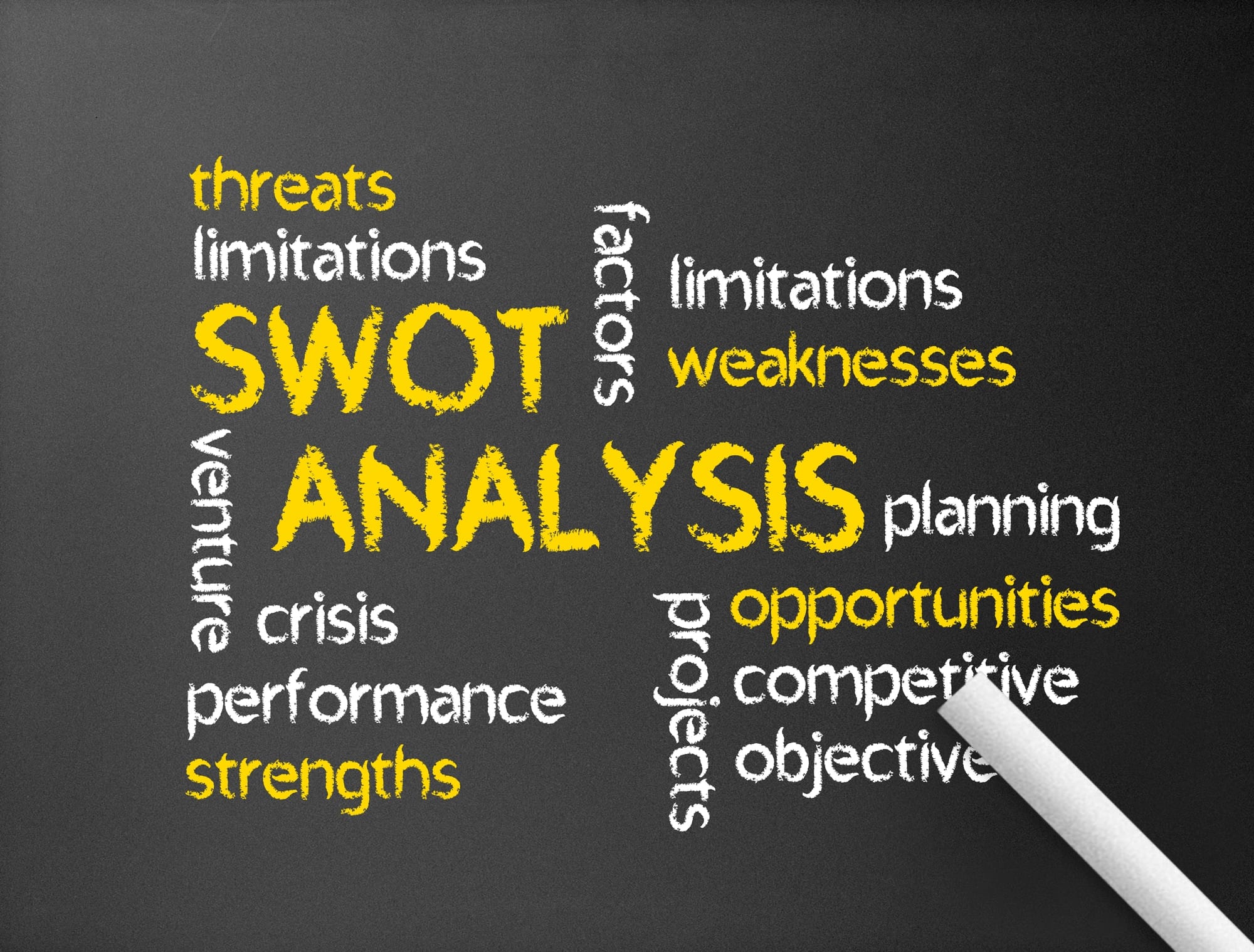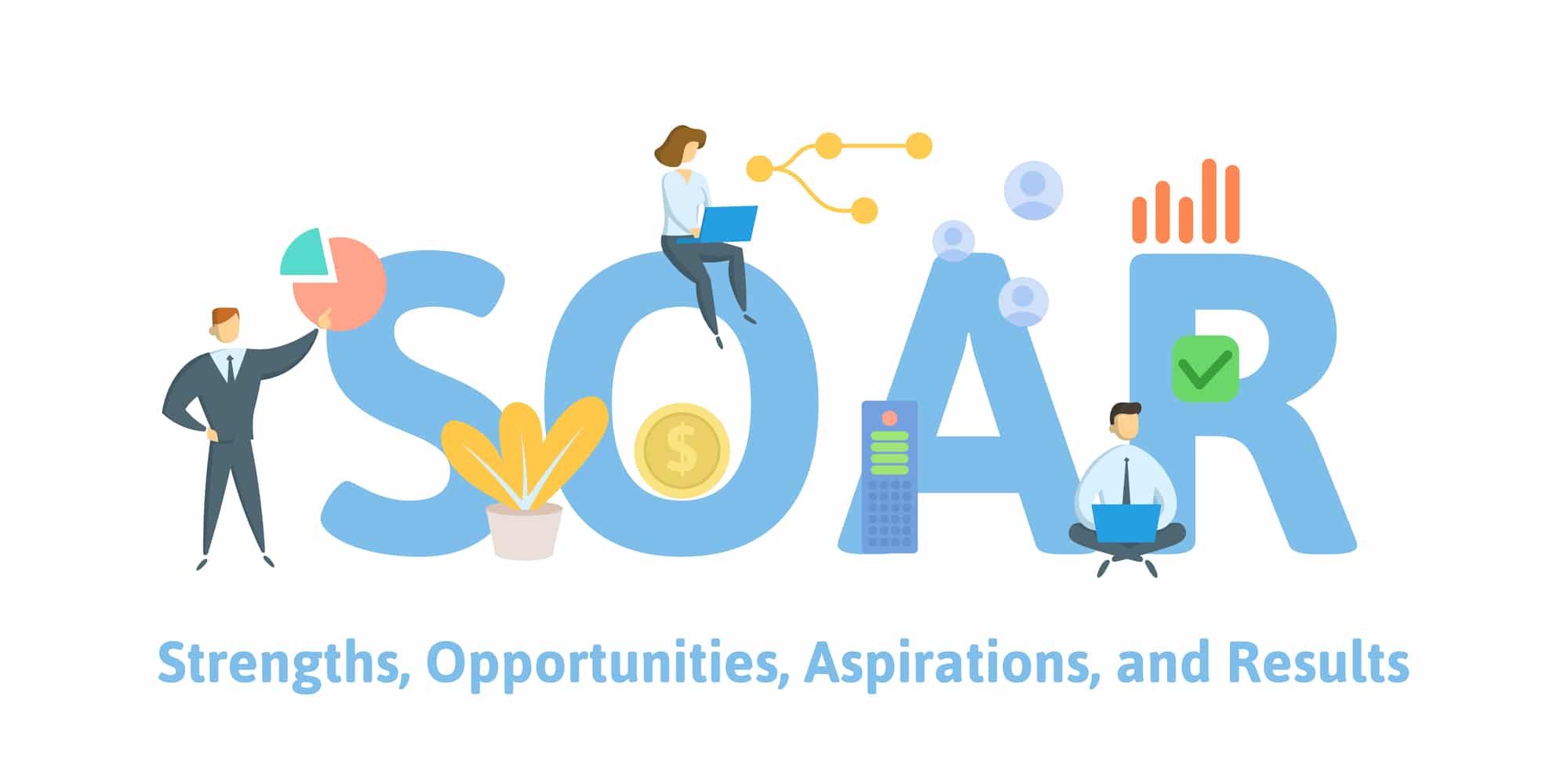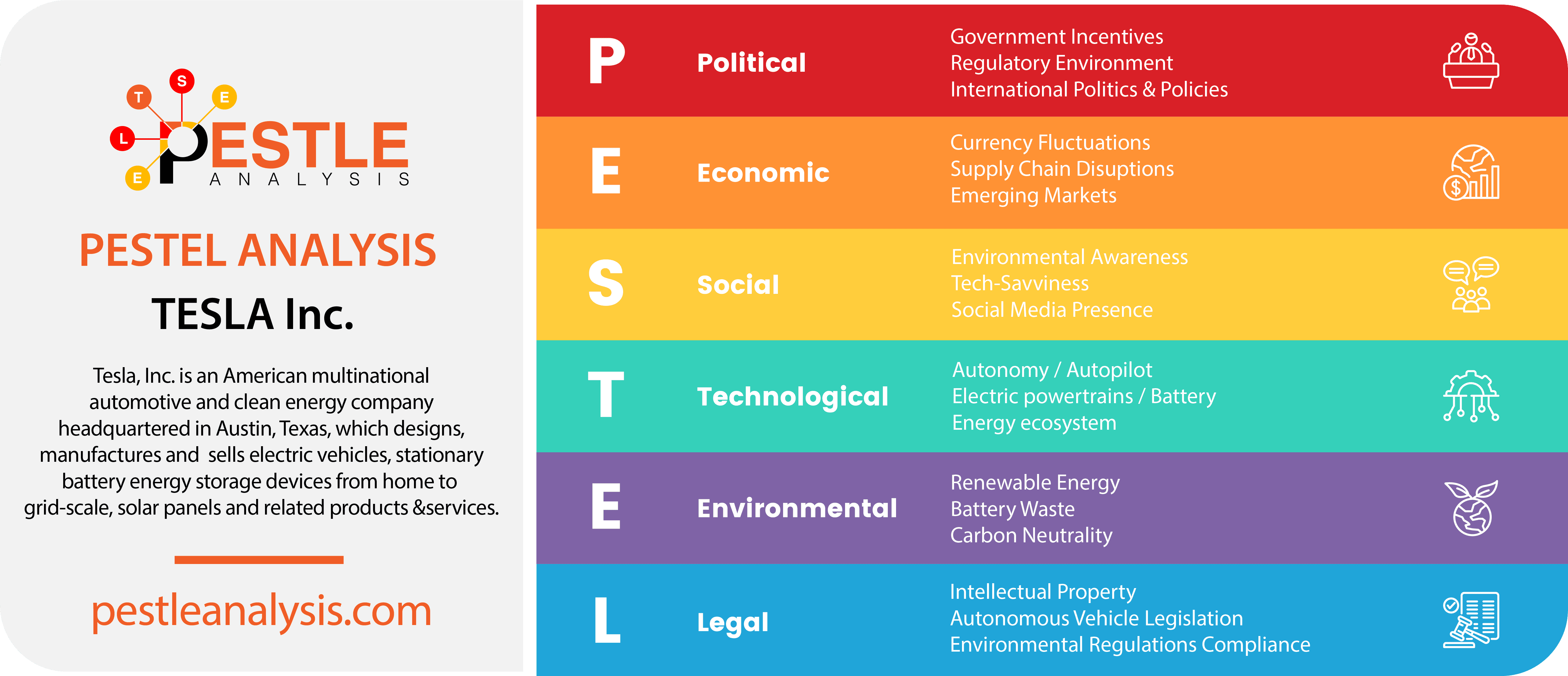Strategic planning tools that can serve as alternatives to SWOT analysis include SOAR, NOISE, TOWS, PESTLE analysis and Porter’s Five Forces.
If you have any interest in the business world or are involved with it professionally, chances are that you may have heard the term SWOT analysis. You may even know it is one of the most common strategic planning tools. Well, if you are looking for SWOT alternatives, you most probably know quite a lot about SWOT analysis already.
While SWOT analysis may be one of the most popular strategic planning tools, it has certain limitations and weaknesses that require finding other suitable alternatives. So, this article will highlight 5 alternatives to SWOT analysis. But first, we have to help beginners in business analysis and planning by answering this:
What is a SWOT analysis?
SWOT analysis reveals the Strengths, Weaknesses, Opportunities and Threats of an organization. It’s a strategic planning tool used in business and project management.
- Strengths (internal factors): Strengths in a SWOT analysis refer to the internal attributes that provide an organization, individual, or project a competitive advantage in the market.
- Weaknesses (internal factors): The weaknesses are the internal factors that hinder the growth of an organization or project.
- Opportunities (external factors): Opportunities are the chances that lie in front of an organization to grow or a project to reach new highs.
- Threats (external factors): Threats in a SWOT analysis refer to external factors that could threaten the success of an organization or a project.
4 SWOT Analysis Weaknesses that Make Alternatives Necessary
- Negative perspective: Perhaps one of the greatest weaknesses of the SWOT analysis is its negative framing of a situation. Unlike other analysis tools that frame an organization's weaknesses and threats as challenges to be overcome, a SWOT analysis presents them as an issue that can cause severe harm. While it is important for companies to keep their weaknesses in mind, overemphasizing them can cause demotivation rather than progress.
- Problem-focused: In addition to that, SWOT analysis is a problem-oriented tool rather than a solution-oriented one. While it can analyze a situation by highlighting a company’s strengths and weaknesses, the opportunities available for it, and the threats it faces, it does not do much more than that. After providing an analysis, it does not give any solutions to those issues. Moreover, while it is helpful to identify opportunities, the four parts of the SWOT analysis are not concerned with coming up with a plan to avail of those opportunities.
- Limited depth: Another downside of using a SWOT analysis is that it does not give an in-depth analysis; rather, it provides a rather shallow view of the situation with respect to a company’s strengths, weaknesses, opportunities, and threats.
- Data-dependent: SWOT analysis needs a lot of up-to-date data for any meaningful conclusions. Collecting this data and keeping a SWOT analysis updated requires time and effort.
5 Better Alternatives to SWOT Analysis

The strategic planning process is a relatively simple, five-step process that includes visioning, choosing goals, adding milestones, circumstance analysis, and revision. A number of tools can be applied at each stage of this process, the most popular of which is a SWOT analysis.
The reasoning presented above, though, should cause companies to look for suitable strategic alternatives to their run-of-the-mill SWOT analysis. For business, some of the strategic alternatives examples include a SOAR analysis, TOWS matrix, NOISE analysis, Porter’s five forces, PESTLΕ, and SCORE analysis.
SOAR Analysis: More positive

An excellent alternative to a basic SWOT analysis is the SOAR analysis, a tool that helps companies come up with and carry out strategies that will eventually lead to them achieving the goals that have been decided upon.
SOAR stands for strengths, opportunities, aspirations, and results. It helps organizations determine their strengths and the opportunities they can exploit. Moreover, it also allows companies to decide their goals for the future and, consequently, the results they will eventually yield.
Furthermore, a SOAR analysis has a rather diverse level of applicability as it can target employees internally and other external stakeholders. For instance, it can provide insights regarding stakeholders' wants and how to motivate them to take actions that will benefit the company.
Moreover, the SOAR analysis focuses on a company’s strengths and the skills it needs to work on. Basically, this analysis aids an organization in utilizing its current strengths to avail opportunities, achieve goals, and attain the desired results.
SOAR Analysis Advantages
- One of the greatest advantages offered by the SOAR analysis is its positive framing of a situation. Contrary to a SWOT analysis, which focuses on the negatives (i.e., weaknesses and threats), the more positively inclined SOAR analysis serves to motivate individuals and teams to do better in pursuit of a common goal.
- Moreover, a SOAR analysis is better suited for new or smaller businesses that want to focus on where they can go rather than what is stopping them from going there.
NOISE Analysis: More actionable
NOISE analysis consists of five components, i.e., needs, opportunities, improvements, strengths, and exceptions. Unlike a SWOT analysis, this analysis is more suited to collaboration and actual problem-solving.
NOISE analysis allows organizations to assess their current situation and strategize to improve their future state. Moreover, unlike a SWOT analysis, a NOISE analysis frames the situation more positively, leading to a higher motivation to do better.
The way that this analysis works may help organizations realize opportunities that they were not aware of earlier.
A unique feature of a NOISE analysis is the Exceptions element which focuses on what an organization is already doing in the other four areas and serves to motivate them to invest resources and do even better.
Moreover, due to the fact that NOISE analysis helps teams focus on the past to improve the future of a business, it is suitable for both large organizations and smaller businesses. Furthermore, NOISE analysis is well suited to complement other strategic planning tools.
NOISE Analysis Advantages
- Unlike a SWOT analysis that focuses on providing a qualitative analysis of an organization’s internal and external factors, a NOISE analysis uses a more action-oriented approach aimed at coming up with solutions to the company’s problems.
- Moreover, unlike its counterpart, a NOISE analysis makes use of more positive language to convince and motivate team members to do better and work towards improving further. It is also well suited to established teams that are used to working together in order to solve the organization’s problems.
- A unique feature offered by the NOISE analysis is its Exceptions component. This component focuses on highlighting what is already going on within the other four quadrants, namely needs, opportunities, improvements, and strengths. These changes or occurrences can be quite evident or even barely there; the point is to highlight that the organization is already capable of doing those things. Hence, it can gain from investing in those areas.
SCORE Analysis: More result-orientated
The SCORE analysis is an acronym for strengths, challenges, options, responsiveness, and effectiveness.
Where strengths represent what the company is already doing or capable of doing, challenges reflect factors that may pose an issue for an organization and require the investment of resources to be overcome.
Moreover, options represent the opportunities available to an organization and the risks that it needs to take. Organizations also need to keep key stakeholders' responses in mind while dealing with the anticipated rewards or returns.
The effectiveness component refers to how the company will ensure its initiative works efficiently and reliably.
SCORE Analysis Advantages
- One major advantage of a SCORE analysis is that it not only takes the existing state of an organization into account before any action is taken but also looks at its situation after an action is taken.
- Moreover, it also measures the results obtained from the analysis by taking into account how different cations have impacted the organization. In addition to that, a SCORE analysis is significantly more proactive, positive, and action-oriented than a SWOT analysis.
PESTLE Analysis: More detailed of external factors

The term PESTLE analysis is an acronym for external macroeconomic factors that an organization must face. The six letters of this acronym represent political, economic, social, technological, legal, and environmental factors.
The political factor represents the extent to which the government is involved in the economy. It also deals with how much a government’s policies can impact an organization's activities.
The economic component deals with the number of economic factors that can impact the company’s profitability. These economic factors include but are not limited to employment rate, unemployment, turnover, interest rates, and foreign exchange.
The social factors that can affect the organization include demographic changes within the country or worldwide, such as population growth, age distribution, etc.
On the other hand, technological elements can include the likes of new innovations in technology, the development of technologies, and the disruptions these innovations and developments cause in the market within which the company operates.
Moreover, environmental factors can include the ecological impact that a company can have on the environment and hence must be mindful of in order to prevent any issues.
Lastly, legal factors can refer to any and all changes in legislation that have an impact on the company’s operations, either negative or positive.
PESTLE Analysis Advantages
- An adequate understanding of the macroeconomic factors highlighted by the PESTLE analysis can be advantageous to organizations. For instance, it can allow them to understand their weaknesses and the threats that they have to face. This information can also be utilized in other related analyses carried out by the company. In fact, a PESTLE analysis works best when it is used in conjunction with other strategic planning tools.
- It makes sure that marketers have adequate information about the company’s environment and are not operating in a silo. In doing so, it also helps organizations plan for and adapt to change that is a constant part of the business landscape.
- In fact, due to its focus on external factors of a company’s marketing environment, the insights from a PESTLE analysis can help in adding to the weaknesses and threats quadrant of a SWOT analysis.
Porter's Five Forces: More rigorous
Named after and developed by a Harvard Business School Professor in the 1980s, Porter's Five Forces model is another relevant alternative to a basic SWOT analysis. This model is aimed at providing organizations with a more accurate understanding of the industries within which they operate and their competitors.
It helps companies figure out how intense the competition is within a given market and if that market is suitable for expansion with respect to a particular company.
The five forces include the threat of new entrants, the bargaining power of buyers, the bargaining power of suppliers, the threat of substitutes, and rivalry among existing competitors.
The threat of new entrants into an industry where a company is operating may be a concern as it can weaken its existing position. Hence, the barriers to entry for new entrants must be significantly high for an organization to be safe.
Moreover, the bargaining power of buyers and suppliers can majorly impact the organization's profitability.
Furthermore, the threat of substitute products and severe competition between players in the industry can weaken the company’s market position significantly.
Porter's Five Forces Advantages
- It can be argued that Porter’s Five Forces model is more thorough and rigorous than a traditional SWOT analysis. This is evident by the fact that the model focuses on external, macroeconomic forces that the company must face.
- The model also includes an additional component called 'complementors' which refers to the reasoning behind the formation of strategic alliances.

Conclusion
While there is no arguing that a SWOT analysis is one of the most popular and easy-to-use tools when it comes to strategic planning, it does have its limitations.
These limitations, including the fact that it focuses mostly on the negatives and does not focus on solutions, have led to organizations opting for alternative tools and approaches. Some of those tools include SCORE analysis, PESTLE analysis, Porter’s five forces, SOAR, and NOISE analysis.
Each of these tools works differently and possesses certain advantages that sometimes make them more attractive options than a SWOT analysis.
Organizations can gain from understanding and using such alternative options in order to analyze their current state, envision their future state and work towards achieving their goals.


